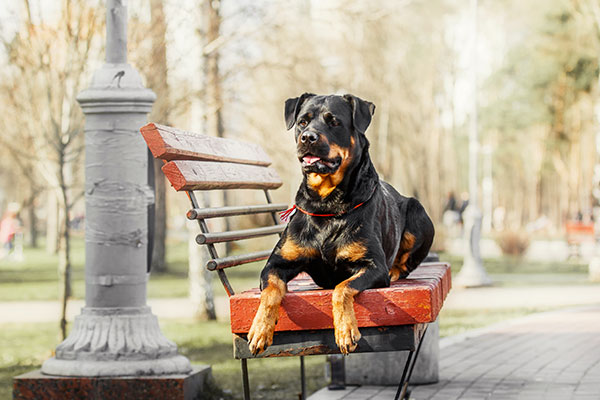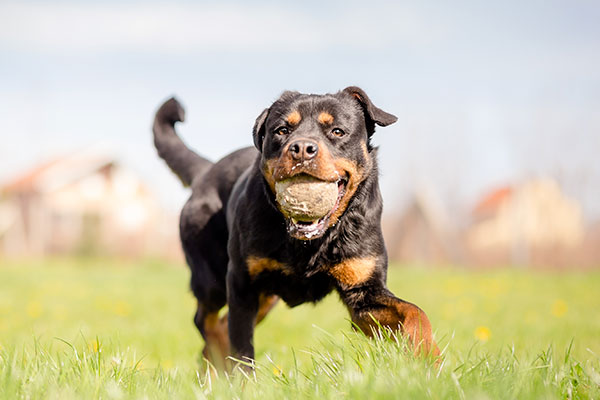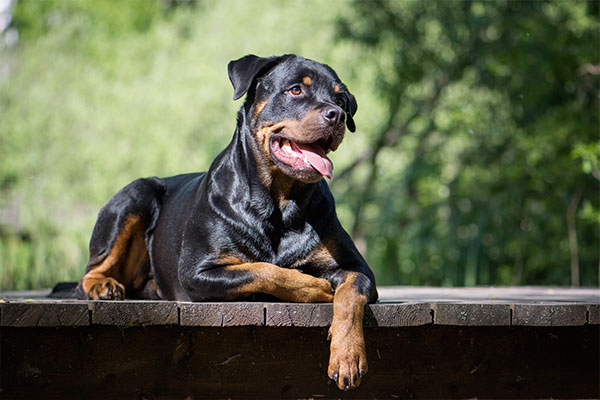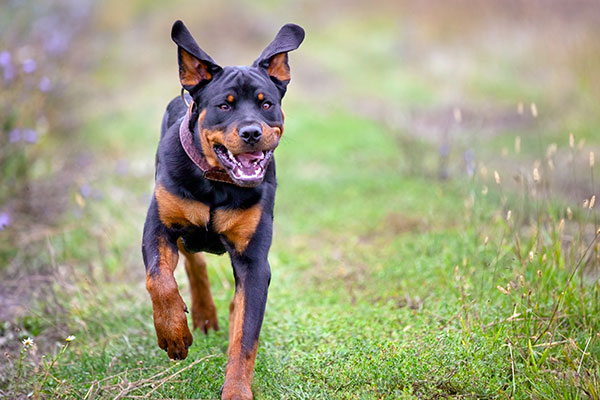
We Tried 5 Fresh Dog Food Brands
Is all the marketing hype worth it? Did our dogs enjoy them? Here’s our dogs’ totally honest review.
The Rottweiler is a good dog but requires an owner suited to his temperament. This dog can be very dangerous for humans and other dogs if he is mistreated or inadequately trained.
Over the years, many diseases have been linked to this breed. It’s the downside of his popularity that led to intense breeding.
He is affectionate, adores his family and is very loyal. The Rottweiler is courageous, responds well to commands and learns quickly. He is very protective and readily detects suspicious individuals. He will always seek to protect his family against intruders and he is hard to intimidate.
Unfortunately, the Rootweiler has a bad reputation because he is regularly depicted in the movies as a mean dog showing his scary teeth and growling.
It is true that this dog can be a threat when not properly trained. Due to his strong jaw, it would be easy to turn him into an aggressive and dangerous watchdog. Because he is such an obedient dog, it would be dangerous for a Rottweiler to be adopted by an aggressive person with malicious intent.
It is unfortunate that this breed has this reputation because he can truly be an excellent dog for children and adults. A family could always count on him.
He recognizes his territory and respects his limits. Once adult and properly trained, he is docile and affectionate. He will always be an excellent watchdog and, if well treated, will reward you a thousand times and will be loyal to you for a lifetime.


All dogs can potentially be dangerous but the Rottweiler’s strong jaw and overall strength make him capable of disfiguring and slaughtering a person in no time. This is why one must be able to control the Rottweiler.
Owners must be patient and in total control of the dog. Problems can occur when owners are not sufficiently strict with their dog.
Between 61 and 69 cm (24.02 to 27.17 inches) for the male
Between 56 and 63 cm (22.05 to 24.80 inches) for the female
Between 50 and 60 kg (110.23 to 132.28 pounds) for the male
Between 35 and 48 kg (77.16 to 105.82 pounds) for the female
The dog has a few brown markings around the head, chest and beneath the tail. His color can be compared to that of the Doberman.
His coat is black, smooth and medium length. His hair is hard and coarse. The undercoat is soft.
According to the FCI breeds nomenclature, this breed belongs to group 2, section 2 and is #147
Does this dog suit your lifestyle?
Every dog breed has its own characteristics. However, the actual character of a dog can vary from one to another within the same breed.
Find out if the Rottweiler is your ideal dog breed with our quiz.
That will take you less than 3 minutes!
Take the quiz







The owner must be patient and in control at all times. When the owner is not firm when training the Rottweiler, the dog can start acting like the boss and this is when problems may occur.
Before acquiring a Rottweiler, you must make sure that you are able to train him and be the master at all times. You must avoid being aggressive or mistreating him. It is the only way to ensure the dog’s loyalty and stability.
Like the majority of dogs, the Rottweiler is an excellent family dog when he is properly trained and well treated. Keep in mind that he is not a pooch but rather a very robust dog that will be loyal and always ready to defend you when needed. This is why it is important to treat and control him well to be sure he responds to commands when necessary.
Basic rules of dog training are essential for breeds like the Rottweiler. To live harmoniously with your Rottweiler, you will need to exert authority in order to avoid being dominated by your companion. This is essential for your well-being and that of your Rottweiler.
You must be thorough when choosing your dog and his breeder when you are adopting. Here are the most common diseases affecting Rottweilers:
- Hip dysplasia
- Elbow dysplasia
- Eye problems
- Congenital heart disease
- Diabetes
This breed is named after the town of Rottweil in Germany.
In those days, the Rottweiler's ancestor guarded the cattle and led the oxen for the butchers. The name of this breed first appeared in the 19th century and almost disappeared in the 20th because of the ban on livestock transport.
Fortunately, this was not the case and the Rottweiler is today one of the most acquired dogs in France.

Is all the marketing hype worth it? Did our dogs enjoy them? Here’s our dogs’ totally honest review.